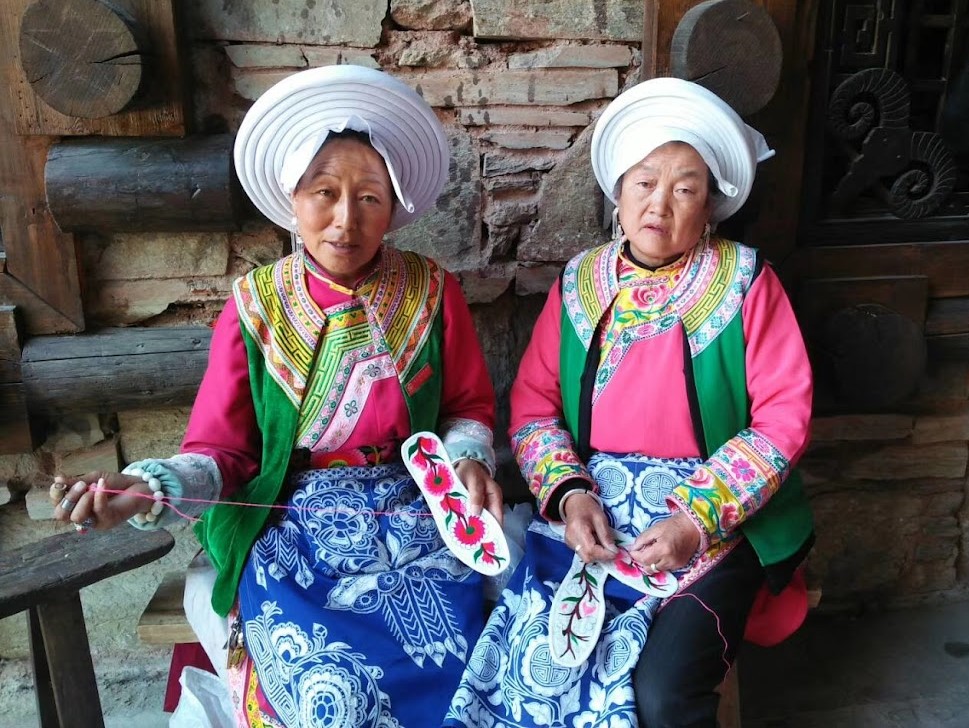Documentation of Yonghe Qiang language and culture

Landing page image for the collection ‘Documentation of Yonghe Qiang language and culture’. Click on image to access collection.
| Language | Qiang |
| Depositor | Nathaniel Sims |
| Affiliation | University of California Santa Barbara |
| Location | China |
| Collection ID | 0551 |
| Grant ID | IGS0333 |
| Funding Body | ELDP |
| Collection Status | Collection online |
| Landing Page Handle | http://hdl.handle.net/2196/91c9326c-6e76-4d8c-aafe-e3f1e7ceccab |
Showreel
Summary of the collection
This collection is a rich audio-visual corpus of linguistic and cultural materials in Yonghe Qiang, a Tibeto-Burman language spoken in Yonghe Township, Mao County, western Sichuan, People’s Republic of China. This collection contains 56 video recordings (45 hours), 3,449 audio recordings, 213 transcription files, 364 photographs.
Group represented
This collection focuses on speakers from Yonghe valley in southwestern Mao County, Sichuan China. Qiang varieties are internally diverse and are not mutually intelligible. The Yonghe variety is not mutually intelligible with other documented varieties of Qiang.
Language information
Qiang (also called Rma) varieties are spoken in the mountainous region along the upper Min river in the Rngaba Qiang-Tibetan Autonomous Prefecture of western Sichuan, People’s Republic of China. The area in which Qiang is spoken spans five counties: Wenchuan, Li, Mao, Songpan, and Heishui. It belongs to the Qiangic branch of Tibeto-Burman, though the exact phylogeny remains to be worked out.
The Yonghe variety is spoken in southwestern Mao County in the Yonghe valley.
Like other Qiang varieties, Yonghe Qiang has a set of directional verbal prefixes which indicate the direction of motion and have also been grammaticized into markers of mood and aspect. The language is largely agglutinative with some degree of fusion.
Qiang is rapidly being replaced by Sichuanese Mandarin. Reasons for language-shift include: compulsory Chinese-only education, increased access to Chinese-language media, new roads which increase ease of transportation, movement to urban areas for migrant work, and a low degree of intelligibility between varieties. In 2008, the Wenchuan earthquake devastated the area and many Qiang speakers lost their lives. Post-earthquake reconstruction and development has also contributed to the increasingly rapid loss of local culture.
Within Yonghe valley, there are 18 villages with populations ranging from about 120 to 350. The southernmost 6 villages are nearly completely linguistically Sinicized. The 3 villages in the central valley are in an advanced state of shift. In the northernmost 6 villages, children are still acquiring the language.
Collection contents
This collection constitutes a broad corpus of recordings in different varieties of Yonghe Qiang. The collection contains a wide range of cultural and linguistic materials, as well as a wide range of speakers in terms of age and gender. Cultural materials include traditional religious ceremonies, traditional narratives, procedural texts, monologues, as well as everyday conversations. Linguistic materials include individually elicited words, sentences, and materials elicited through language-neutral stimuli. In addition, the collection contains some legacy materials. The legacy materials, which total about 4 hours, were VHS video recordings made in the 1990s and have been digitized and preserved for the first time through the efforts of this project. This project also used WeChat to facilitate the study of conversation and grammatical structures in group-chat conversations.
A portion of the recordings were created by Bai Jianqiong working remotely with Nathaniel Sims. These recordings contain life-history interviews with her family members, documentation of traditional agricultural practices, and traditional cooking practices. Bai Jianqiong interviewed her paternal grandfather about his work keeping bees and about local customs and practices surrounding beekeeping, including an interview with her grandfather, as well as over three hours documenting the process of making beehives. She also recorded over four hours of natural conversation by people harvesting peppercorn.
Collection history
The data for this collection was collected during the doctoral research of Nathaniel Sims, the principal investigator. These recordings were collected by Nathaniel Sims in collaboration with community members Long Deyue and Bai Jianqiong, and Yang Zhiquan.
Acknowledgement and citation
To refer to any data from the collection, please cite as follows:
Sims, Nathaniel A. 2018. Yonghe Qiang language and culture: a collection of language and cultural material from the Qiang people of Yonghe valley in Rgnaba Prefecture, Mao County, Sichuan, China. Endangered Languages Archive. Handle: http://hdl.handle.net/2196/00-0000-0000-0012-5FAD-9. Accessed on [insert date here].


